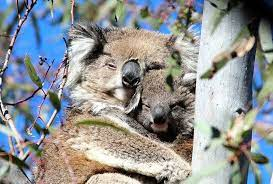Marsupials, a unique group of mammals, possess extraordinary adaptations that set them apart from other animals. From their specialized reproductive system to their adorable pouches, these creatures captivate us with their remarkable biology. In this article, we delve into why marsupials are so special, with a particular focus on how the baby marsupials are transferred to their mother's pouch and why they are universally known as joeys.
The Extraordinary Reproductive System: Unlike placental mammals, marsupials have a distinct reproductive process. The female marsupial possesses two uteri, allowing them to carry multiple embryos simultaneously. However, only one of these embryos develops fully, while the rest remain dormant. This remarkable adaptation ensures that the mother is always ready to nurture her offspring, regardless of the prevailing conditions.
Birth and the Journey to the Pouch: After a relatively short gestation period, usually a matter of weeks, the underdeveloped marsupial embryo is born. At this stage, the baby marsupial is tiny, blind, and hairless. But the journey has only just begun. Instinctively, the newborn joey instinctively wriggles its way towards its mother's pouch, which serves as a safe haven for further development.
The Pouch: A Second Womb: The pouch, a unique characteristic of marsupials, serves as a secondary womb for the developing joey. It provides warmth, protection, and a constant supply of nourishment. The mother's pouch is specifically designed to accommodate the joey, with muscular walls that hold the baby securely in place. The joey attaches itself to one of the mother's teats, where it latches on for the next phase of its growth.
Growth and Development: Within the pouch, the joey undergoes rapid growth and development. The mother's milk is highly nutritious, providing essential nutrients and antibodies to support the joey's immune system. As the joey grows, it gradually becomes more independent, moving in and out of the pouch, and exploring the world around it. However, it still seeks the comfort and security of the pouch whenever it feels threatened or needs reassurance.
Diverse Range of Marsupials: Marsupials come in various shapes and sizes, with unique adaptations to suit their respective environments. Some of the most well-known marsupials include the kangaroo, koala, wallaby, wombat, Tasmanian devil, quokka, and sugar glider. Each species has its own distinctive features and behaviors, but they all share the common characteristic of pouch-bearing and nurturing their young joeys.
Marsupials truly stand out in the animal kingdom with their extraordinary reproductive system and the remarkable journey of their babies to the safety of the pouch. The bond between a mother marsupial and her joey is a testament to nature's ingenuity and the incredible diversity of life on Earth.
